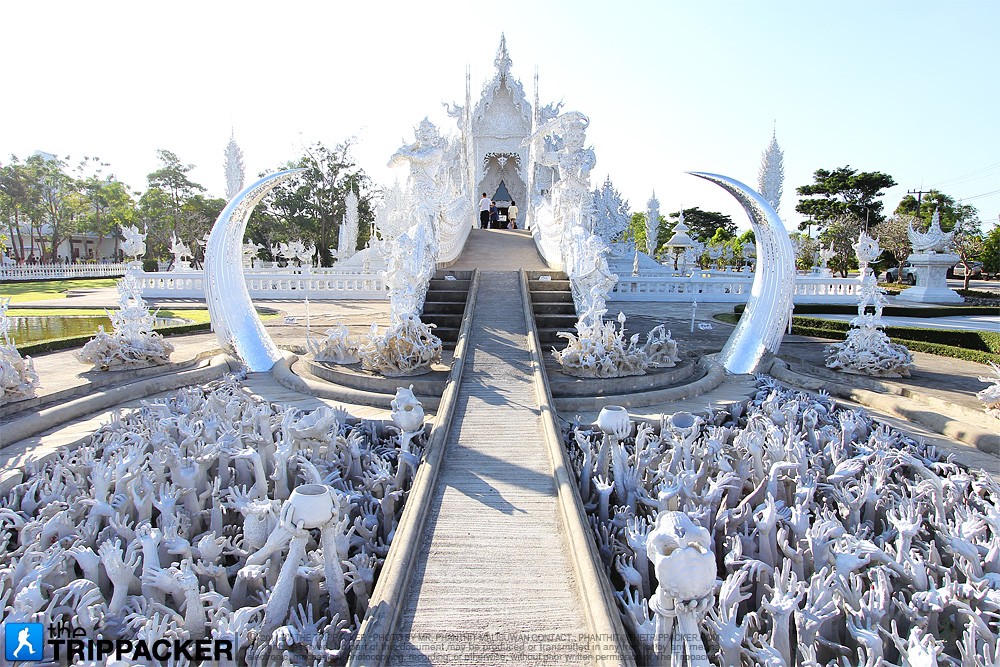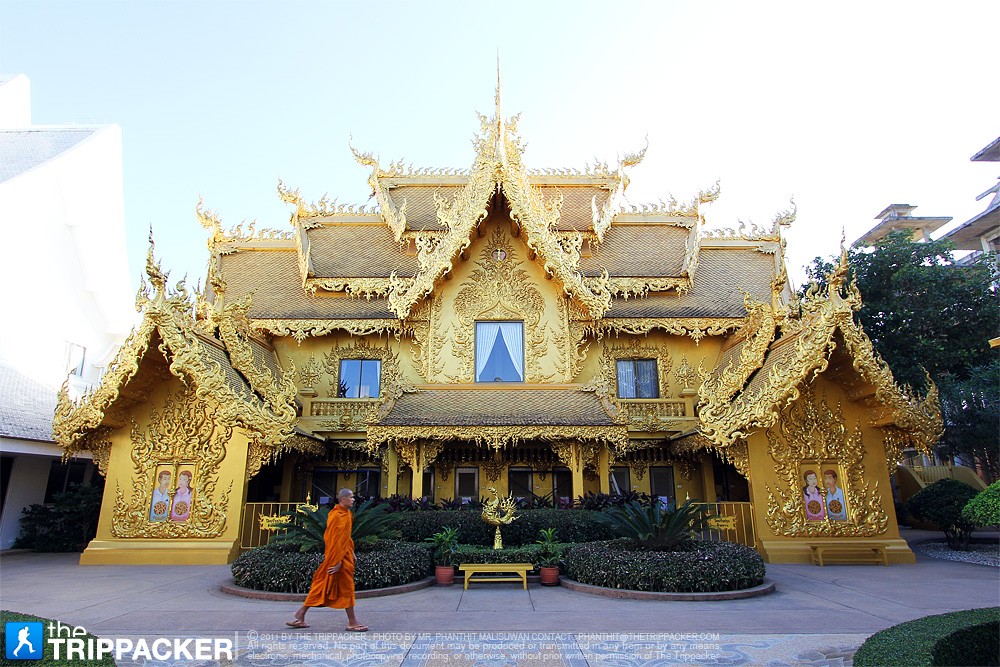Wat Rong Khun
Of all the temples that you’ll come across in Thailand, Wat Rong Khun is definitely one you’ll want to see. Since its construction, the temple has received many mixed reviews. Some have found it to be menacing and sacrilegious while others think of it as an intricate and modern interpretation of an artist’s view towards religion. In any case, this temple will be the most unconventional you’ll ever see.
Wat Rong Khun, aka The White Temple, is situated nearby the northern city of Chiang Rai. Due to its complexity and unorthodox design, it has become an important landmark of the province that attracts an increasingly large number of visitors every year. Construction of Wat Rong Khun began in 1997. Acclaimed Thai artist Chalermchai Kositpipat volunteered to carry out the construction of the sanctuary as an offering to the Lord Buddha. The temple’s final plan comprises of nine buildings that includes the chapel, pagoda, hermitage, crematorium, monastery hall, preaching hall, museum, pavilion, and restroom facilities.
As soon as you arrive, the mere sight of the temple’s white radiance gives you this overwhelming feeling. The ubosot (chapel) is designed white in color with white glass mosaic pieces embedded in the plaster. The color of white is to symbolize the Buddha’s purity whereas the glass symbolizes the Buddha’s wisdom that “shines brightly over all the Earth and Universe.” As you make your way to the chapel, notice the small semicircle just before the bridge; it represents the human world. The bigger circle with fangs is the mouth of Rahu; impurities of the mind, hell or suffering. What is striking to all visitors are the outstretched arms on the floor, as if calling out for help. The bridge represents the crossing over from the cycle of rebirth to the “Abode of the Buddha”. At the end of the bridge are several statues of the Buddha sitting on a lotus encircled by various spirits.
Take notice of the chapel’s roof. Here you will find four kinds of animals representing one of the four elements. The elephant stands for earth, the naga serpent stands for water, the swan’s wings represent wind, and the lion’s mane represents fire. Once inside the chapel, there is a dramatic contrast of colors. The murals on all four walls, ceiling, and floor contain vivid colors and golden tones. The achievements of mankind and the Buddha’s journey to enlightenment are depicted using a combination of Thai and contemporary design. You may find it bizarre to find iconic characters from cartoons (Spiderman) and films (Predator alien), as well as objects (spaceship), inside a temple.





































